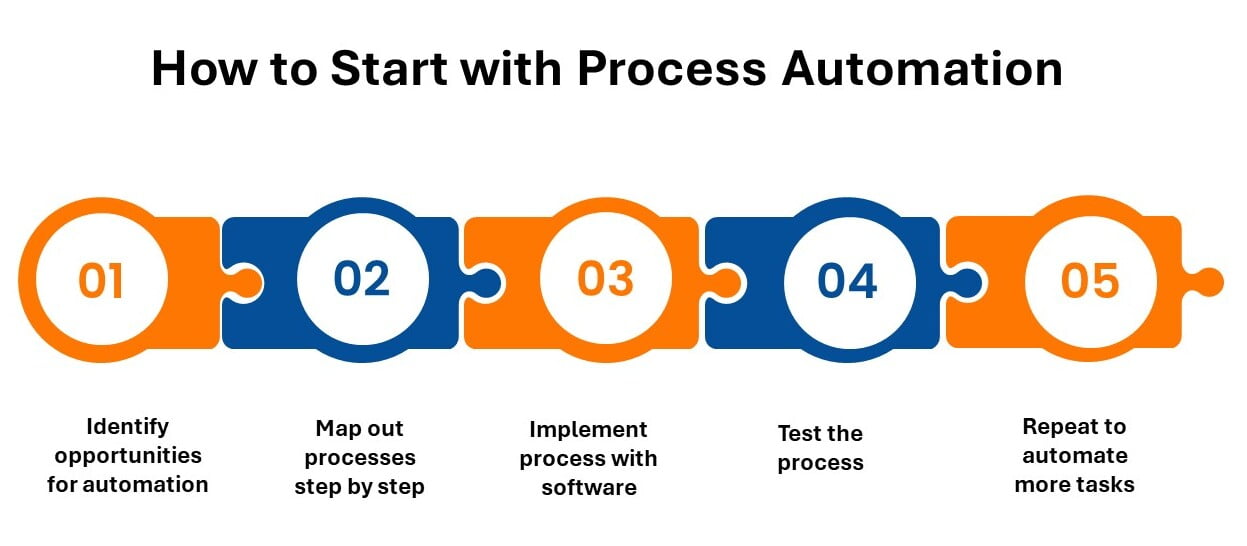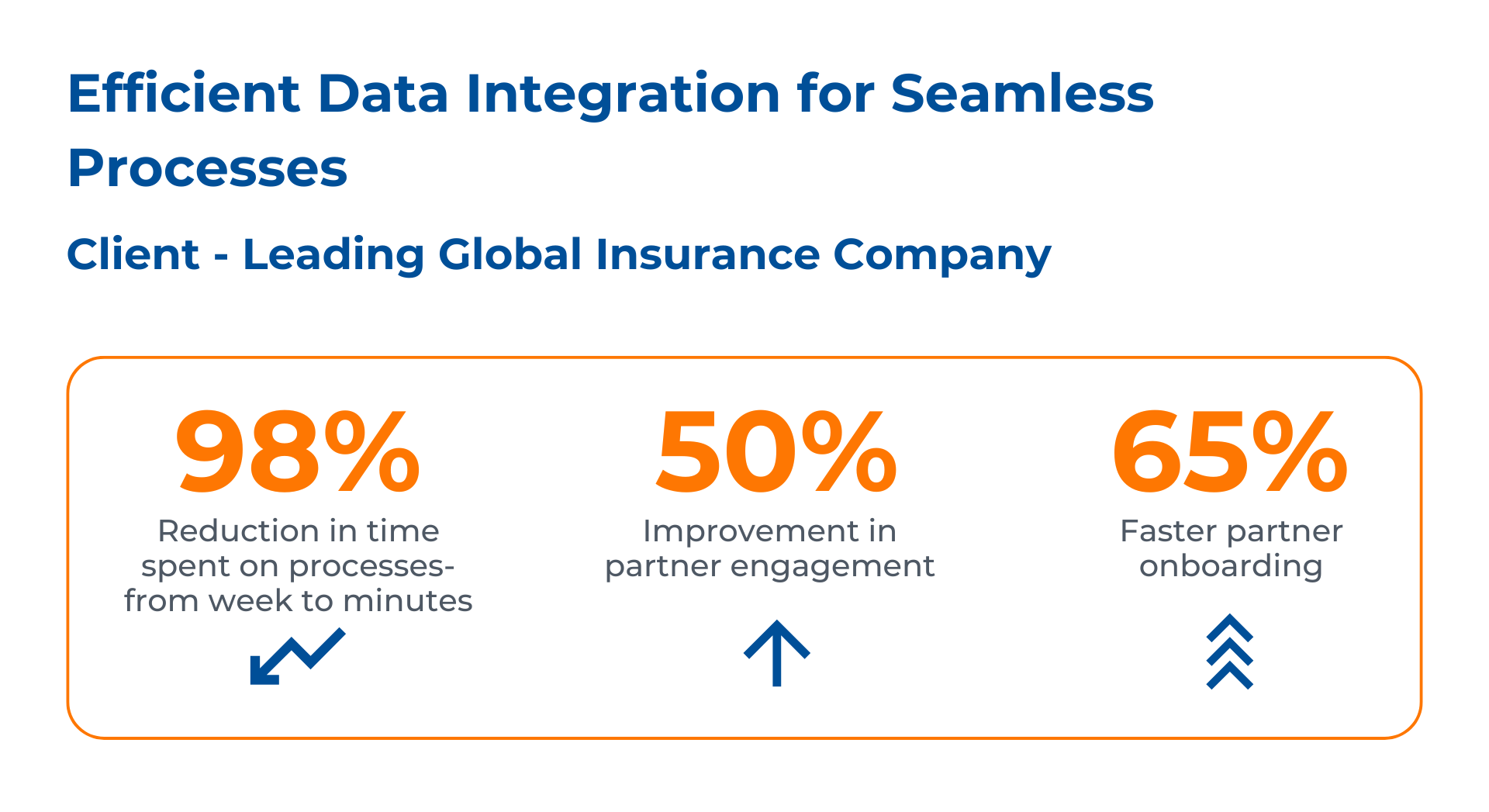Table of Contents
- Benefits of Process Automation
- Applications of Process Automation
- Key Technologies in Process Automation
- Implementing Process Automation
- Challenges and Considerations
- Future Trends in Process Automation
- Case Studies
- Robotic Process Automation (RPA) vs. Process Automation
- Kanerika – Driving The Future of Automation
- FAQs
Benefits of Process Automation
Automating processes in your business can lead to significant improvements across several areas. These enhancements often translate into tangible competitive advantages in efficiency, accuracy, and cost-effectiveness.
Increased Efficiency
When you implement process automation, one of the primary benefits you’ll notice is an increase in efficiency. Moreover, automation allows for tasks that were previously performed manually to be completed more quickly and consistently. For example:
- Task completion times are reduced, as automated workflows can operate 24/7 without breaks, speeding up the overall process from start to finish
- Employee allocation improves since staff can redirect their efforts to more strategic tasks that require human intelligence, leaving the repetitive duties to automated systems
Error Reduction
Error reduction is another critical benefit of process automation. Automated systems are programmed to follow exact protocols, which minimizes the chances of mistakes that are common with manual processing. Consider these points:
- Automation ensures consistent output quality, regardless of volume or time, by reducing the variability introduced by human error
- The risk of data entry errors is significantly diminished which is crucial for tasks that require a high level of accuracy, like financial reporting or customer data management
Cost Savings
Lastly, integrating process automation results in cost savings for your business. This is due to various factors such as:
- Lower operational costs, since automated systems can operate at a lower cost than a team of employees performing the same tasks
- Reduced error-related costs, as fewer mistakes mean less time and resources spent on correcting them, which can be substantial in processes like order fulfillment or invoicing
Applications of Process Automation
Process automation streamlines various sector-specific tasks, enhancing speed and accuracy while reducing the need for manual intervention.
Manufacturing Industry
In the Manufacturing Industry, process automation primarily takes the form of assembly line robots and control systems. And, you’ll find that these automated systems perform tasks such as:
- Assembly: Automated machines rapidly piece together products with precision
- Quality Control: Vision systems conduct checks for defects or deviations
- Packaging: Robots efficiently box and label items for shipment
Service Industry
Within the Service Industry, automation transforms customer service and back-office operations with:
- Chatbots: These provide instant responses to customer inquiries
- Appointment Scheduling: Programs efficiently manage appointment bookings without human input
- Data Management: Automated systems compile and process large volumes of data for analytics
Healthcare
In Healthcare, process automation contributes to better patient care and administrative efficiency through:
- Patient Records Management: Software swiftly updates and retrieves patient information
- Appointment Reminders: Automated systems send out reminders, reducing no-show rates
- Billing and Claims Processing: Programs automate the billing cycle, ensuring accuracy and compliance
Finance and Banking
Finance and Banking benefit from process automation with:
- Transaction Processing: Automated systems handle transactions quickly and with fewer errors
- Fraud Detection: Algorithms analyze patterns to detect and prevent fraudulent activity
- Customer Onboarding: Digital platforms streamline the gathering and verification of new client information
Key Technologies in Process Automation
Process automation utilizes a suite of technologies to enhance operational efficiency and streamline workflows.
Robotic Process Automation (RPA)
Robotic Process Automation is the technology that allows you to configure computer software, or a “robot,” to emulate and integrate the actions of a human interacting within digital systems to execute a business process. Additionally, RPA robots utilize your user interface to capture data and manipulate applications just like humans do. They interpret, trigger responses, and communicate with other systems to perform a variety of repetitive tasks. An important characteristic of RPA is its ability to perform high-volume, repeatable tasks that previously required humans to perform. Some common applications of RPA include:
- Data Entry and Migration: Automating standard, repetitive keystrokes and mouse actions to transfer data between applications
- Forms Processing: Extracting information from structured forms and entering it into databases
- Email Processing: Reading emails, extracting relevant data, and taking necessary actions based on the content
Business Process Management Software (BPMS)
Business Process Management Software provides a systemic approach to making an organization’s workflow more effective, more efficient, and more capable of adapting to an ever-changing environment. A BPM software allows you to design, document, monitor, and control both automated and non-automated business processes, with the aim of improving overall performance. Key features often include:
- Process Modelling: Graphical tools to design and simulate new processes before their actual implementation
- Process Optimization: Continuous improvement tools which help analyze process efficiency and identify bottlenecks
- Workflow Management: Organizes and manages tasks and activities within the defined processes
Artificial Intelligence (AI)
Artificial Intelligence in process automation means the introduction of decision-making capabilities that simulate human thought processes in a modeled environment. AI can range from basic process algorithms to advanced machine learning and data pattern analysis. AI technologies can enhance process automation by:
- Predictive Analytics: Analyzing data patterns to predict future outcomes and trends
- Natural Language Processing (NLP): Allowing the interpretation and understanding of human language by computers
- Intelligent Decision-Making: Automating complex decisions based on data that traditional automation might not be capable of handling
Implementing Process Automation
Successfully implementing process automation requires methodical preparation and a comprehensive, step-by-step approach to integrate technology into your business infrastructure.

Strategy and Planning
To begin with, establish a clear set of objectives and a strategic plan that aligns with your organizational goals. You should:
- Conduct a needs assessment to identify areas where automation can improve efficiency
- Develop a project roadmap including timelines and milestones
- Allocate appropriate resources, both technological and human, to support the automation project
Selecting Processes for Automation
Choose processes for automation by considering:
- Rule-based tasks that involve structured data and have clear processing criteria
- Activities with high repetition and volume that are prone to human error
- Processes that, once automated, can lead to significant time and cost savings
Integration with Existing Systems
Ensure that the automation solutions seamlessly integrate with your current systems:
- Assess compatibility with existing software and databases
- Map out data flows to confirm that automated processes can accurately exchange information with other systems
- Establish security protocols to protect data integrity and privacy during the automation process
Change Management
Embrace change management to facilitate a smooth transition:
- Engage with employees to educate and prepare them for the changes automation will bring
- Develop training programs and materials to ensure staff are proficient with new technology
- Set up a support system to address any concerns or issues promptly
Challenges and Considerations
Incorporating process automation into your operations requires navigating several hurdles and making informed decisions to circumvent potential pitfalls.
Technical Constraints
Your automation efforts will face technical limitations. These can manifest in the form of integration complexity—the need to ensure that new automation technologies work seamlessly with existing systems. This often involves creating APIs or finding connectors that enable smooth communication between systems. Additionally, when selecting automation tools, it’s crucial to ensure they fit your specific processes rather than forcing your workflows to adapt to the tools, which can lead to inefficiency and potential failure of the automation initiative.
Employee Adaptation
The success of process automation also hinges on your team’s ability to adapt to new technologies. Resistance to change can stem from a lack of understanding of the new systems or fear of job displacement. To address these concerns, involve stakeholders in the planning process to gain their buy-in and provide comprehensive training to foster acceptance and ease the transition.
Data Privacy and Security
When automating processes that handle sensitive information, you must address data privacy and security concerns. Implement robust security measures to protect against data breaches, unauthorized access, and compliance violations. This will involve regular security audits, employee education on data handling best practices, and the adoption of encryption and access control mechanisms that align with your industry’s regulatory requirements.
Future Trends in Process Automation
The landscape of process automation is continuously evolving, with significant strides being made in artificial intelligence, data analytics, and the integration of IoT.
Advancements in AI and Machine Learning
Your experience with process automation is set to become more intuitive and efficient as AI and ML become more advanced. These technologies are not just automating tasks; they’re also learning and improving from each interaction. Additionally, expect systems that can predict your business needs and optimize processes in real-time, leading to smarter decision-making and cost savings. Notably:
- AI-powered tools are automating complex business processes, once thought to require human intervention
- Machine learning algorithms can uncover insights from data patterns, enhancing process outcomes
The Growing Importance of Data Analytics
Data analytics is becoming a cornerstone for process automation. With the sheer volume of data at your disposal, the ability to extract meaningful insights is crucial for making informed decisions. Your systems will increasingly rely on:
- Real-time data analysis to promptly adjust and improve business processes
- Predictive analytics to anticipate and mitigate risks or capitalize on upcoming trends
The Role of IoT in Automation
The Internet of Things (IoT) plays a pivotal role in the automation ecosystem. Moreover, as more devices become connected, your business can achieve higher levels of efficiency and resource management. Key developments include:
- IoT sensors providing real-time data that can trigger automated workflows
- Connected systems that enhance communication among various devices, leading to autonomous operation and maintenance
Case Studies
How did Process Automation Impact a Leading Insurance Provider
This case study talks about how Kanerika enabled a leading insurers get the best out of their processes
Challenges:
- Manual insurance claim processes result in financial losses and inefficiencies
- Absence of a reliable fraud detection system leaving the company vulnerable to fraudulent claims
- Inflexible processes and human intervention obstruct efficient data analysis and critical detail identification
Solution:
To overcome these challenges, the company implemented AI/ML-powered Robotic Process Automation (RPA) for fraud detection in insurance claims, significantly reducing fraud-related financial losses.
Leveraging predictive analytics, Artificial Intelligence (AI), Natural Language Processing (NLP), and image recognition, the company monitored customer behavior, enhancing customer satisfaction.
AI/ML-driven RPA solutions were introduced for fraud assessment and operational excellence, leading to substantial cost savings.
Results:

Another real-life example of process improvement through automation can be observed with Siemens.

Robotic Process Automation (RPA) vs. Process Automation
Robotic Process Automation (RPA) and process automation both streamline business operations, but they serve different purposes and have distinct capabilities.
- Scope:
- RPA: Focuses on automating individual tasks traditionally performed by humans.
- Process Automation: Encompasses the automation of entire end-to-end processes, often integrating several systems.
- Implementation:
- RPA: Operates on the user interface level, mimicking the actions that a human would take.
- Process Automation: Involves a deeper integration with systems, often requiring changes to the underlying technology infrastructure.
- Complexity:
- RPA: Best suited for routine, repetitive tasks that do not require human judgment.
- Process Automation: Handles more complex scenarios, coordinating multiple tasks that could involve decision-making processes.
- Flexibility:
- RPA: Easily adjusts to changes in the task’s steps, as it mimics user interactions without modifying the underlying systems.
- Process Automation: Requires a more thorough reconfiguration to adapt to changes, as it is embedded within the system’s workflow.
- Applications:
- RPA: Common for data entry, form filling, and simple data manipulations.
- Process Automation: Often used for higher-level business process management, where workflows may require advanced analytics or AI decisions.
Remember, the choice between RPA and process automation depends on your unique business needs, such as the complexity of tasks, the level of control and integration required, and the scale of the processes you aim to automate.
Kanerika – Driving The Future of Automation
In the realm of business efficiency, Process Automation is becoming a cornerstone strategy. As businesses navigate the challenges of evolving market dynamics and escalating demands, automation enables efficiency, enhancing operations while boosting customer satisfaction, and brand reputation.
When considering implementation of process automation for your business, the initial step is crucial: identifying the right processes to automate. This strategic phase is where Kanerika excels, offering expertise in pinpointing the processes that will most benefit from automation.
Moreover, our track record speaks volumes, with clients experiencing up to 40% growth in employee productivity and an impressive 90% increase in process agility after automation.
FAQs
What is process automation?
What are the benefits of process automation?
What are some common tools used in process automation?
How do I know if process automation is right for my business?
What are some challenges of process automation?

















